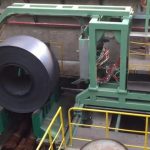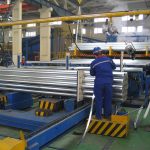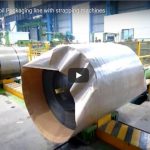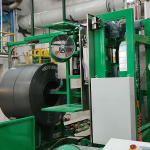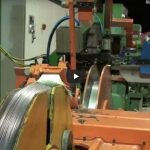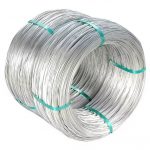The steel coil strapping machine is a highly efficient and reliable solution for automatic circumferential steel binding. This machine includes a steel belt dispenser, steel belt strapping head, and cradle with rail, ensuring a smooth and efficient strapping process. The strapping head moves left and right per coil position, ensuring consistent and uniform strapping every time. It also presses down from the top to the coil surface, with height level adjustment for a neat and secure strapping.
The automatic strapping machine is designed to strap the coil at the saddle of the coil cart, ensuring that the coil remains stable and secure during transportation or storage. The strapping belt can be configured to have 1, 2, or 3 belts per coil, depending on the specific needs of the business.
All actions of the machine are controlled with PLC and HMI, ensuring a user-friendly interface and automated controls for consistent and reliable performance. The machine is designed for easy maintenance and servicing, with durable construction and high-quality components ensuring a long lifespan.
Overall, the steel coil strapping machine is an excellent choice for businesses that need to strap steel coils quickly, efficiently, and reliably. Its ease of use, superior strapping capabilities, and low maintenance requirements make it an ideal solution for a wide range of metal processing applications. More information about the steel coil strapping machine can be found at the provided link.
More information about the steel coil strapping machine: https://www.fhopepack.com/steel-coil-strapping-machinery/

